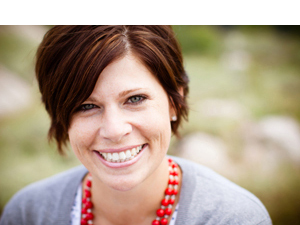.jpg)
Sundae.
i love her puffy feathers!.jpg)
.jpg)
Fancy & Huevo.
.jpg)
squishy.
.jpg)

.jpg)
tiny is soooo very tiny.
but the loudest of the whole group.
.jpg)
.jpg)
i will be so bummed if Fancy is a rooster.
with all that eyeliner… surely she is a hen..jpg)
.jpg)
.jpg)
.jpg)
.jpg)
.jpg)
.jpg)
being a model is hard work.
sometimes you fall asleep on the job…
we just got our chicks at our local Orschelin.
we chose from their supply… Americanas, Barred Rocks and Bantums.




Lisa - LOVE that first pic of Sundae – she looks like she’s a model on the catwalk!
Angela - I was so close to buying ducks on Friday! Unlike Mr. Duerksen, my husband would’ve been, uh, less than pleased. 😉 I’ve always wanted ducks and chickens and your pics have been giving me chick fever! (Is that a thing? Just go with it…)
Mindy - Cuteness overload! I was scrolling through and thinking these diva chicks look like they are on a modeling shoot and then I saw you you referred to them as models at the end. They COULD be in a magazine for sure!
Annie - This is the sweetest and funniest post and so cleverly written. Funny that you named them and I hope Greta Garbo doesn’t turn into Clark Gable either (the rooster with eyeliner!)
Dana Powell - It is fascinating to me that it is not evident that chicks are either male or female. I would love to have some one day, but right now are neighborhood association restricts it (that, and we live in a foreign country and travel frequently…). Anyway, I’m sure you’ve done your research, but have you seen this I got from successwithpoultry.blogspot.com?:
GENERAL SIGNS
– Pullets usually get their wing and tail feathers before cockerels (in the first week or so).
– At around 5 to 6 weeks, sometimes sooner, you will see definate comb development on the cockerels in most breeds (it will start to redden, whilst the pullets will still be yellowy).
– At 2-3 months you will see the hackle feathers developing on the males. They will start to get longer and will be more pointed.
– Cockerels are usually braver – if you walk into your henhouse and accidentally sneeze, the pullets should be the ones that scattered!
– Cockerels have more pointed feather tips.
– Cockerels are usually bigger by a few weeks old.
– Pullets tend to have a smaller, round head, compared to the cockerels larger more angular one.
– Cockerels usually have longer legs (look for spur development).
All of these general signs are indications – not certainties. There are always exceptions to the rule, and not all breeds will conform to the general signs. You may have a really friendly timid cockerel in your bunch masquerading as a pullet (and vice versa).
BREED SPECIFIC INDICATIONS
Barred Rocks and Cuckoo Marans – Males have wider white barring. They will often appear more silvery-grey than black. The males usually have a much larger, splotchier headspot.
Rhode Island Reds – By 5 weeks males have larger and thicker legs and a larger (pinkening) comb and wattle area.
Salmon Faverolles – By 2 weeks you can usually see a difference in the colours on the wings. Black should indicate a cockerel. Salmon brown should indicate a pullet.
Silkies – It can be several months before signs start to appear. Boys tend to stand more erect and girls more likely to be short and squatty. If the feathers swoop back towards the neck on the crest, then it is likely to be a boy.
White Crested Polish – The females tend to get more fluffy, mushroom looking crests.
OLD WIVES TALES – take with a pinch of salt!
If you pick a chick up with two fingers by the neck, the pullets will draw their legs up to their body and the cockerels legs will dangle.
Hold your chick on their back in your hand. If they stop kicking after a short time, it’s a pullet, if they keep kicking it’s a cockerel.
Needle and Thread – dangle the needle over your chick … if it moves around and around it is a female, if it swings back and forth it is male – this is supposed to work for both chicks and eggs.
However you try to determine the sex of chicks you won’t know for sure until it crows or lays an egg – but it can be a lot of fun finding out 🙂
I’m waiting on pins and needles alongside you.
Love your blog, been reading for years but rarely comment. 🙂
sharon / theprincipledtype.blogspot.com - these chicks got swag. even when napping 😉
Janet - Fabulous photos–I especially love the ones of all the chickens together in lines!!
Lorraine - Eeek!! I just love lil’ chicks!!! You have a sweet bunch there!! We have bought chicks, had mama’s hatch them and have incubated our hens eggs! It’s all so much fun! You should look into an incubator, there is nothing like counting down the days and watching those little babes break through those tough shells!!!!
Carrie - So cute! I work at the Orscheln home office – I was hoping you got the ladies from us!
Kim - Meg,
I love the chick pics, they make me feel Springy!
p.s.Thanks for the beautiful wrapping and terrific service regarding my new apron (Jane) and pillow cover (whales) I recently bought from you. Such beautiful work, I absolutely love them both.
The lovely one - So cute! Too bad they grow into chickens…. I love to keep them as cute baby chicks forever!